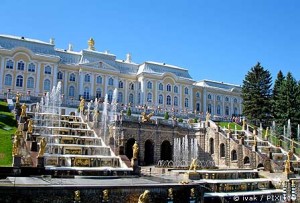St. Petersburg
St. Petersburg is located on the Neva River, in the northern part of what is known as “European” Russia. It was founded in 1703 by Peter the Great. It is known as the “Venice of the North” because it is a city located on literally a host of islands. (The number of islands is still in dispute; in the early 20th century, the number of islands stood at 101, now the number stands at 42. This is because some of the islands are separated by small canals and aren’t really considered “Islands”). The islands that make up St. Petersburg, connected by 342 bridges, have been dubbed the “cultural capital” of Russia.
For a time, St. Petersburg was considered the true capital of the country, for over two hundred years. After the Russian Revolution in 1917, the capital city was moved to Moscow. St. Petersburg sits almost directly north of Moscow, and is considered the northernmost Western city of Russia. Behind Moscow, it is the second largest city in Russia. St. Petersburg today is home to several areas of imperial palaces and pleasure residences of former rulers and tsars. The estates have lavishly landscaped gardens, extraordinary palaces along with art and history collections.


